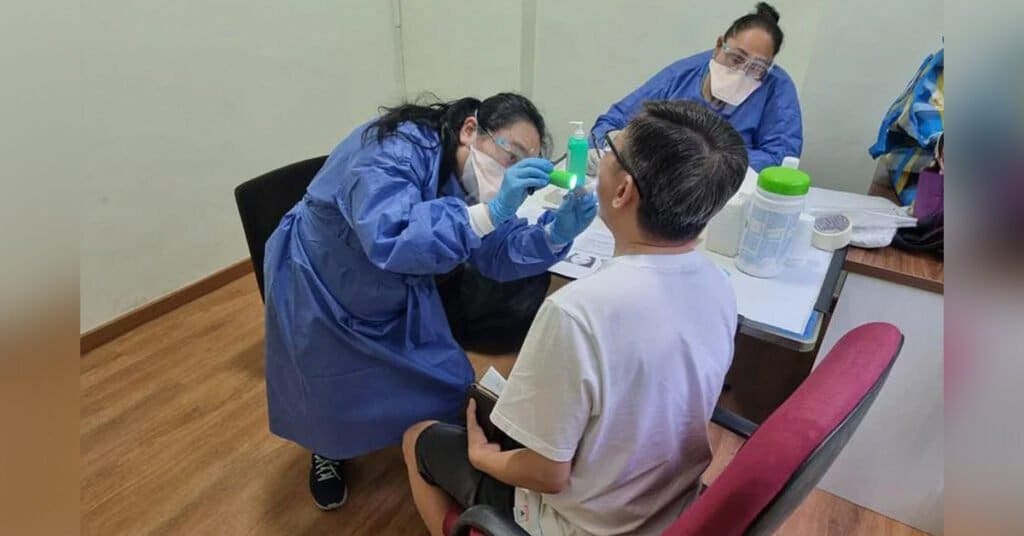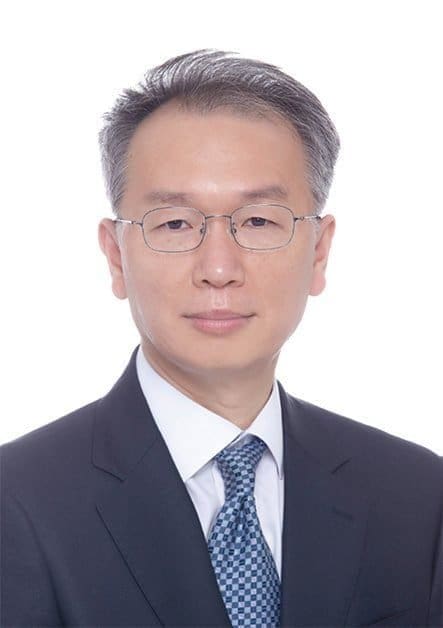The number of older adults in Asia is growing rapidly, and with it the prevalence of age-related dental problems. Dental care needs to be tailored to meet the needs of older adults, who often have multiple chronic conditions.
The Asia-Pacific region is home to more than 60% of the world’s population over the age of 60. This “super-ageing” demographic presents unique challenges for dental care providers. The United Nations defines a super-aged society as one where more than 20% of their total population is aged 65 years and older.
In many cases, traditional models of dental care delivery are not well suited to meet the needs of this rapidly growing population segment.
Asian countries adopt a variety of approaches to the delivery of dental care, ranging from fee-for-service in high income countries to government-supported public programs in low and middle income countries. While fee-for-service is becoming more common in the region, most older adults do not have access to private dental care due to high costs and the need for substantial out-of-pocket payments.
This has resulted in a public health gap, where the burden of oral disease is shifting to older adults who often do not have access to dental care.
In this article, we will examine the impact of ageing populations on the current state of dental care in some Asian nations, with a view on national policies, measures and initiatives that are being suggested or implemented to deal with the looming challenges.

Singapore’s 8020 movement
The high rate of edentulous senior patients is a prevalent problem even for high-income nations like Singapore, where some still believe tooth loss to be an inevitable condition of ageing.
A 2016 study found that only 9 per cent of Singapore’s population aged above 80 had at least 20 teeth left, while 30 per cent of those aged above 60 did not have any teeth at all. About one in five Singaporeans above 40 suffer from poor oral health that has impacted chewing, swallowing or speaking abilities.
A Singapore census conducted in 2020 showed that residents aged 65 years and above represented 15.2 per cent of the population in 2019 – a 9 per cent increase from 2010.
It is estimated that by 2030, around one in four people in the country will be aged over 65, meaning Singapore will be classified as a super-aged society (above 20 per cent), set to join the ranks of fellow high-income Asian nations like Japan.
Known for its pragmatism and pre-emptive nation-building policies, the Singapore government isn’t folding its arms.
The National Dental Centre Singapore (NDCS) rolled out its pilot project named the Oral Health Movement 8020 or OHM8020, which is targeted at helping people aged 40 and above retain at least 20 of their natural teeth beyond the age of 80.
Keeping apace with the government’s national Healthier SG program, the OHM8020 pilot was launched with a public consultation from 18 May – August 15.
The program screened 288 people, the majority of which were aged 60 and above and found that 22 per cent (64 people) were either “orally frail or in the orally pre-frail state”. The latter group was invited attend a comprehensive oral examination and oral frailty assessment.
According to Dr Chan Pei Yuan, a consultant at NDCS’ restorative dentistry department, the study found that the vast majority of the population visit the dentist only when there is pain, by which time extensive and expensive treatment like root canal treatment were usually required to restore their dentition.
Although the free screening programme will end in November, the Centre hopes to scale the study by engaging with other partners.
The effects of tooth loss does not only impairs the patient’s ability to chew, but also their food choices and nutritional status, said Dr Goh Siew Hor, the immediate past president of the Singapore Dental Association.
“In some individuals, it may also have a psychosocial impact as they may be embarrassed by their appearance and therefore limit their social interaction and type of activities,” he added.
Another Singapore government initiative known as The Project Silver Screen (PSS) is functional screening programme that helps senior citizens to access vision, hearing and oral health check-ups at subsidised rates at various convenient venues.
The PSS is only for those aged 60 and above, explained Dr Goh who heads up the clinical services at NTUC Health. Some of the patients in this age group have already lost too many teeth to function well, which is why the NDCS initiative endeavours to help the younger patients before they tip into oral frailty.
“Educating other community service providers on possible signs of oral frailty and need for appropriate dental referrals can also be helpful in early identification of those who may be at risk of oral frailty,” he said.
“Geriatric dentistry needs to be mandatory subject in Korea”
It is predicted that Korea will enter a super-aged society by 2025.
According to some of the country’s prominent dental academicians like Prof Ko Hong-Seop, Korea’s dental healthcare system focuses mainly on the treatment of elderly patients who can visit the dentist on their own.

However, the President of the Korean Society of Geriatric Dentistry believes that education on the treatment of debilitated or dependent elderly patients, which is expected to increase in the future, is insufficient.
Only a few schools, he said, dealt with nutritional, social and environmental aspects, and quality of life pertaining to this vulnerable group.
The academic and institutional support to meet these social needs, he added, is also inadequate as compared to other countries. For example, the curriculum related to geriatric dentistry at the dental colleges does not meet international standards when you look at its corresponding curriculum designation ratio in relation to existing clinical practice education.
According to a research paper authored by Prof Ko published in the international academic journal Gerodontology, only 54.5% (6 places) of Korean dental schools designate geriatric dentistry as a mandatory subject.
The other three were elective subjects, and two had no geriatric dentistry curriculum. On the other hand, 92.8% (52 institutions) designated geriatric dentistry as a required subject among dental schools in the United States. This is the result of a survey of geriatric dentistry curricula of domestic and foreign dental colleges as of May 2018.
Clinical practice training is also not being carried out smoothly. The dental college affiliated hospital does not have an independent department for geriatric dentistry, nor does it provide independent clinical education from other subjects. There were also no volunteer activities or off-campus programs related to geriatric dentistry.
On the other hand, 57.1% of US dental schools had a compulsory pre-doctoral clinical education program, and 64.2% of European dental schools were conducting clinical practice in geriatric dentistry. In addition, 78.5% of them were compulsory education, and 26.8% were doing clinical practice at volunteer facilities.
In particular, in addition to quantitative figures, problems in which lecture contents and topics are not standardized also appear on the board. It is pointed out that there are some common contents in the geriatric dentistry courses at each university in Korea, but there is no agreement on the contents of mandatory education, so there are differences in the contents of the lectures for each school.
The research team emphasized the need to prepare guidelines to standardize the geriatric dentistry curriculum in dental schools. Prof Ko also advised that systematic education based on nursing hospitals and off-campus training programs is necessary for clinical practice.
It is also necessary to nurture faculty members who will provide effective geriatric dentistry education, and suggested institutional supplementary measures to include geriatric dentistry in the dental college accreditation system and dentists’ national evaluation subjects.

Preventing Taiwan’s tooth loss crisis
Like South Korea, it is predicted that Taiwan will enter a super-aged society by 2025.
According to statistics from the Ministry of Health and Welfare, the prevalence of periodontal disease among adults in Taiwan is as high as 80.4%, of which the prevalence of periodontal disease among adults aged 50 to 64 is 6.7 times that of those aged 18 to 34.
In part to deal with the severe gum-related issues among its senior citizens, the country has implemented the ” Oral Checkup 123″ which advocates that you should “complete 2 dental cleanings every 1 year with health insurance subsidies, and perform 3 steps of self-oral examination every day to treat periodontal disease as soon as possible”.
According to a survey conducted by the Ministry of Health and Welfare, 88.7% of people over 80 have periodontal disease, and only 19.6% have 20 natural teeth.
Although Taiwanese adults are provided with subsidised rates for twice-yearly dental cleaning, only 33% of them use it. Among them, 30.3% of people aged 50 to 64 maintain the habit of cleaning their teeth once every six months, but only 17.1% of them are aged over 65 years.
The Adult and Elderly Population Health Survey Report linked diabetes and heart disease to periodontal disease.
If periodontal disease is neglected, the elderly over the age of 65 may face a crisis of tooth loss, said Dr Wang Zhenying, Chairman of the Family Dentistry Association and an attending physician of the Department of Periodontics, National Taiwan University Hospital.
Dr Wang cited another survey that showed the proportion of people over 65 who still retained 24 teeth is less than half, and they may lose their teeth before the age of 80.
In response to the 8020 plan advocated by the World Health Organization (WHO), the Family Dentistry Association of the Republic of China promotes that people over the age of 80 can have 20 natural teeth in order to enjoy an active quality of life in old age.
Their campaigns regularly promote slogans like these: Regular teeth cleaning and proper brushing habits can reduce health threats such as dementia or chronic diseases among the elderly.
Advising the elderly population to go for regular checks, Dr Wang reminds:
“Bleeding from brushing your teeth may be caused by inflammation of the gums, but it may not be painful.
“Although the initial symptoms are easily ignored, you can self-check through 3 steps: Tooth bleeding when eating hard foods and brushing your teeth; widening gap between the teeth; and recessing gums.
“If you experience swelling or pain or bleeding due to pressing the gums with your finger, tongue or toothbrush, seek medical attention as soon as possible.”
The information and viewpoints presented in the above news piece or article do not necessarily reflect the official stance or policy of Dental Resource Asia or the DRA Journal. While we strive to ensure the accuracy of our content, Dental Resource Asia (DRA) or DRA Journal cannot guarantee the constant correctness, comprehensiveness, or timeliness of all the information contained within this website or journal.
Please be aware that all product details, product specifications, and data on this website or journal may be modified without prior notice in order to enhance reliability, functionality, design, or for other reasons.
The content contributed by our bloggers or authors represents their personal opinions and is not intended to defame or discredit any religion, ethnic group, club, organisation, company, individual, or any entity or individual.

